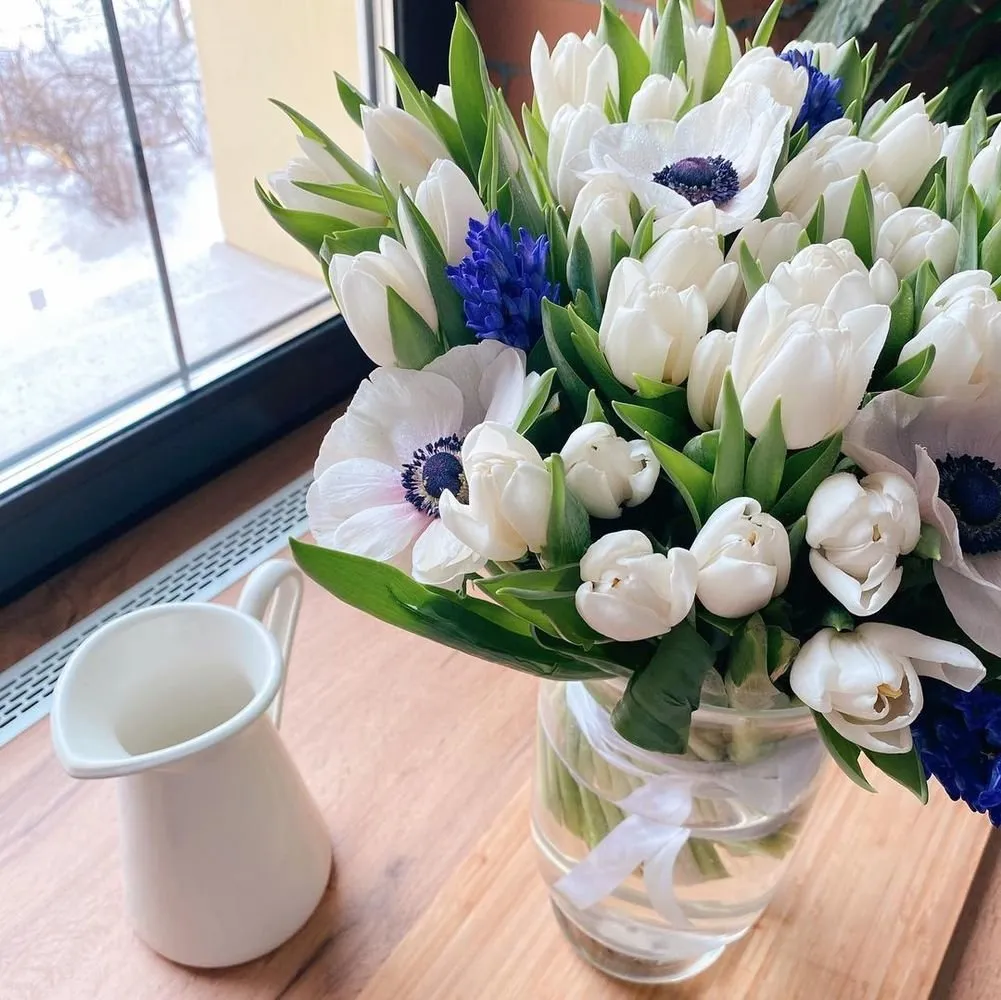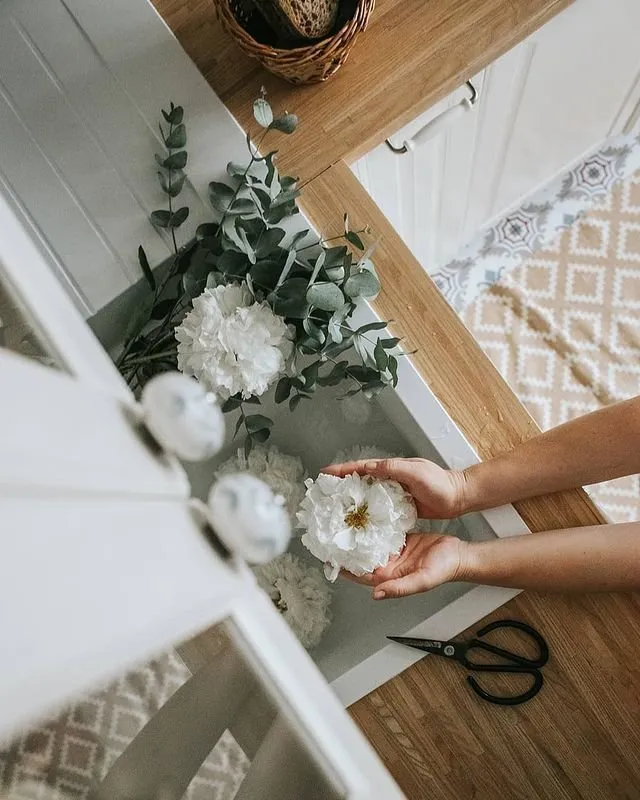There can be your advertisement
300x150
Simple Tips to Keep Flower Bouquets Fresh Longer
What peonies, ranunculuses, roses, tulips, orchids love, and what kills them by the second day
There is nothing sadder than a beautiful floral arrangement wilting the next day… But there are many tips that extend the life of bouquets. We've selected the most effective and easy to implement ones.
In the article below you will find care specifics for each type of fresh-cut flower: asters, orchids, lilies, carnations, gerberas, ranunculuses, peonies, chrysanthemums, and here you see about tulips, hyacinths, roses, daffodils, hydrangeas and alstroemerias.
 @kseniyafilimonovaTo make flowers last longer
@kseniyafilimonovaTo make flowers last longer1. If you bring flowers home in cold weather, don’t rush to put them in a vase. Flowers need to acclimatize (preferably in a cool place) for an hour.
2. If you cut flowers yourself, do it early in the morning. Flowers rest and absorb moisture at night. Therefore, flowers cut in the morning are more viable.
3. Remove the packaging from flowers. Do this for aesthetic reasons too. Living flowers are beautiful by themselves; they don’t need all those decorations made of plastic and corrugated paper.
4. Remove all leaves from the bottom of the stems: they won’t rot, and the stems will receive more clean water.
 @stalinka_v_danilovskom
@stalinka_v_danilovskom5. Cut stems at an angle under cold water by 1–2 cm (air entering the hollow stem will shorten flower life).
6. If flowers have hard stems, such as roses, chrysanthemums or lilacs, split the stems 2–3 cm or crush the ends with a wooden mallet for better water access.
7. If milky sap oozes from the stem when trimmed, before placing flowers in a vase, dip the stem ends into boiling water for a couple of seconds.
8. Hard tap water is harmful not only for people but also for flowers. Use settled or boiled room temperature water for your bouquets.
9. A tablespoon of citric acid or vinegar softens hard water.
10. To prevent stem rot, add half an aspirin tablet, a teaspoon of salt or alcohol.
11. Sugar (1–2 tablespoons added to water) extends the life of living flowers.
 @katya_dorohina
@katya_dorohina12. Cut flowers and change water daily! This is probably the main secret for long life of almost all flowers. Each day trim stems by 1 cm and refill the vase with clean water.
13. Refresh the bouquet with daily spraying of cool water.
14. To remove deposits on inner walls, wash the vase with a baking soda solution. Also thoroughly rinse stems when changing water.
15. A vase of fruit next to flowers accelerates their wilting.
16. Not all flowers get along with each other. Most aggressive to others are carnations, lilies, primroses, daffodils, contrast-color roses, lilies and tulips should be placed in separate vases.
17. Revive a bouquet by submerging it in warm water up to the buds for 1–2 hours. Flowers will absorb water and last much longer.
 @ladybagrova
Each flower type deserves a special approach
@ladybagrova
Each flower type deserves a special approach- Peonies love water: remove leaves, leaving no more than 2–3 pieces, place in a large amount of water with sugar and citric acid added.
- Ranunculuses. Remove packaging, trim stems a few millimeters under an acute angle under water. Place the bouquet in a vase with settled water for a couple of hours. Ranunculuses are very moisture-loving plants and continue growing even in a vase. Therefore, trim stems daily to prevent breakage under the weight of buds.
- Gerberas. Trim in hot water (+60°C). Add sugar and a bit of alcohol to the water.
- Asters. Remove short stems with small leaves before placing in a vase. Change water as often as possible, then asters will last up to two weeks.
- Orchids. They prefer warm water. Occasionally dip stems into a warm bath.
- Carnations. Trim stems at the thickened node, place in water with sugar and half an aspirin tablet added.
- Lilies. Remove pollen sacs — dark tips of stamens with pollen.
More articles:
 Convenient Bar Counter: 6 Great Ideas from Designers
Convenient Bar Counter: 6 Great Ideas from Designers Vintage Furniture in Interior Design: 7 Amazing Examples
Vintage Furniture in Interior Design: 7 Amazing Examples Want to Live Here: 8 Amazing Waterfront Buildings
Want to Live Here: 8 Amazing Waterfront Buildings How a Girl Did a Budget Renovation in a Rented Khrushchyovka Apartment (Before and After Photos)
How a Girl Did a Budget Renovation in a Rented Khrushchyovka Apartment (Before and After Photos) Don't Repeat These Mistakes in a Small Apartment: 7 Common Interior Design Errors
Don't Repeat These Mistakes in a Small Apartment: 7 Common Interior Design Errors Not Enough Space on the Kitchen? Plan These Things Before Starting the Renovation
Not Enough Space on the Kitchen? Plan These Things Before Starting the Renovation 7 Indoor Plants Safe for Pets
7 Indoor Plants Safe for Pets Designer Reveals 5 Outdated Solutions That Will Ruin Any Interior
Designer Reveals 5 Outdated Solutions That Will Ruin Any Interior